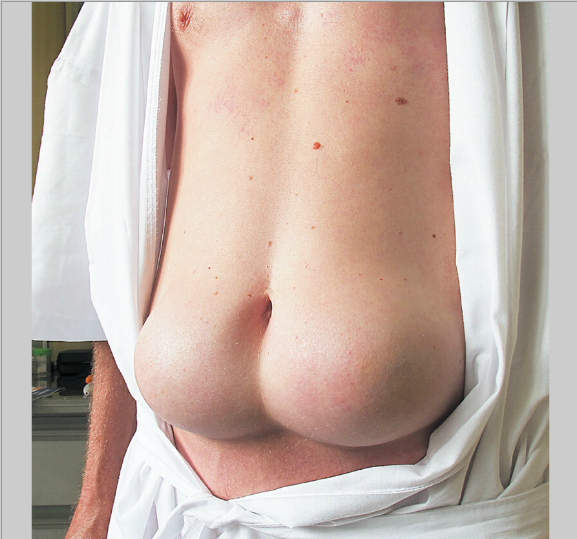The New England Journal of Medicine recently published the photograph below. It is of a 55-year-old man with Type 1 diabetes who has been injecting insulin under the skin of his belly for more than 30 years. Those who inject insulin regularly are often advised to ‘rotate’ (vary) the site of injections. One reason for this is that if they don’t, they can run the risk of developing ‘lipohypertrophy’ – enlargement of fat cells local to where the insulin is injected. The picture below is a graphic example of this condition.
© New England Journal of Medicine 2012
This picture, I think, serves also as a useful reminder of the potential roles that insulin has in the body. Insulin is essential to life, because without it glucose cannot be transported into the cells for fuel, and dangerously high levels of glucose can build up in the bloodstream.
However, insulin has other effects too. It is integral to fat storage, for instance. Here are three pertinent effects here:
Insulin stimulates the uptake of fat into the fat cells
Insulin activates the enzyme ‘lipoprotein lipase’ that catalyses the conversion of fat in the form of triglcyerides into smaller molecules known as fatty acids. These fatty acids, unlikely triglyceride, can make their way into the fat cells.
Insulin increases the supply of glycerol for the ‘fixing’ of fat in the fat cell
Insulin also facilitates the uptake of sugar into cells where it can be converted into glycerol In combination with fatty acids, glycerol forms triglyceride again, effectively ‘fixing’ fat in the fat cells.
Insulin inhibits breakdown and release from the fat cells
Triglyceride in the fat cells is disassembled through the action of an enzyme known as ‘hormone-sensitive lipase’. Insulin inhibits this enzyme, and therefore slows fat release from the fat cells (lipolysis).
These inherently fattening effects of insulin make it a likely key player in individuals who are struggling with their weight. More importantly, eating and living in a way which helps lower insulin levels provides the opportunity to reverse the processes listed above an facilitate fat loss.
In essence, what this means is eating a diet based on natural, unprocessed, ‘primal’ foods such as meat, fish, eggs, nuts, seeds, non-starchy vegetables and some fruit. What is notably missing from this diet are the starchy carbohydrates we’re sometimes urged to eat for their ‘essential and nutritious’ nature. The thing is, though, starchy carbs are neither essential nor especially nutritious. And the surges of insulin they tend to induce can lead us down a path to excess weight, and other health issues including cardiovascular disease, and type 2 diabetes.
Much more about all this can be found in my latest book Escape the Diet Trap.
